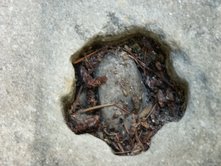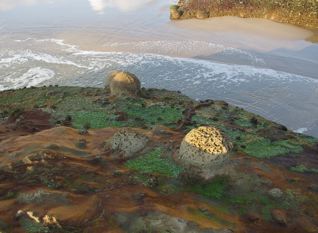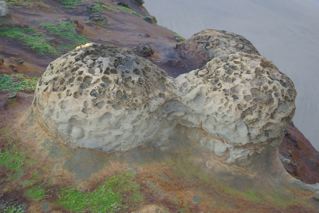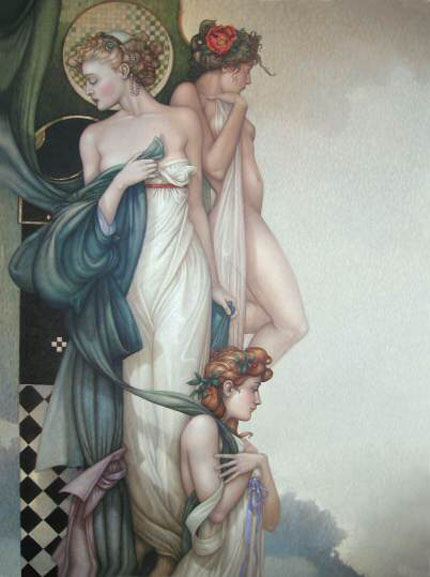John Vonderlin, collector of the Coastside’s natural wonders asks, “Was Pescadero an outpost of the mythic Atlanteans?”
Read his fascinating email:
As I mentioned previously, one of the type of rocks I collect I call “NotRocks.” A NotRock is a rock that’s attractive or collectible because of the parts that are missing. On our coast it is common to see rocks that have been holed by various molluscs.
(Photo: A “notrock”, courtesy John Vonderlin)
“Notrocks” come in an amazing array of shapes with the holes being spaced in pareidolic arrangement sometimes.
“Tafoni” is probably the seond most common NotRock found on our coast. I have hundreds of photos of various tafoni along this stretch of coast. While tafoni are mysterious, the forces that create them are at least partially known.
Not so for the mysterious star-shaped holes I found in rocks at several places along the coast. Fascinated I posted my finds on several rock forums, but never got even a hint of what might have caused them. While with a computer controlled laser or lathe you could duplicate this in a lab or shop, how was it happening in isolated hard to even reach spots?
I did learn that there were people who believed that these same star-shaped holes found in large blocks of rock on the ocean floor in the Caribbean were the product of the super science of Atlantis. They reported in some cases the star-shaped holes actually spiralled through the rocks.
Could there have been an outpost, now submerged, of the mythic Atlanteans in Pescadero?
…to be continued…












